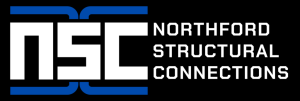Insights on the Precast Concrete Market: A Booming Sector
Welcome to another bright and bustling day in Chicago, where we’re diving into the fascinating world of precast concrete! If you’ve ever marveled at a sturdy building or a beautifully paved sidewalk, you might not have realized just how critical precast concrete is to those structures. Whether it’s high-rises, bridges, or even the humble sidewalks we walk on every day, the impact of this material is everywhere!
What is Precast Concrete?
So, what exactly is precast concrete? To put it simply, it’s concrete that’s been poured into a mold and cured in a controlled environment before being transported to a construction site. This process not only speeds up construction times but also allows for greater precision and often superior quality compared to traditional methods.
The Growing Demand
According to recent data, the precast concrete market is experiencing a significant boom! The global market size is expected to grow impressively in the next few years. Many analysts predict a compound annual growth rate (CAGR) of around 5% between 2023 and 2030. This growth is largely attributed to the increasing demand for durable construction materials that can withstand the test of time. With urbanization on the rise and infrastructure needs soaring, precast concrete is quickly becoming the go-to choice for many construction projects.
Applications Galore
Precast concrete is incredibly versatile. You’ll find it in a variety of applications, including:
- Residential buildings – Offering prefabricated walls, floors, and other structural elements.
- Commercial buildings – Used for everything from warehouses to high-rise offices.
- Bridges – Ideal for creating durable and strong bridge components.
- Pipes and drainage systems – Smarter infrastructure solutions for modern cities.
- Architectural elements – Aesthetic components that add flair to buildings.
Green Innovations in Construction
As we move towards a more sustainable future, precast concrete is also becoming a favored option for eco-conscious builders. With the ability to recycle materials and reduce waste, it’s easier to meet green building standards. Plus, precast concrete elements often lead to energy savings during both the construction and operational phases of buildings.
Regional Insights
Looking at the global landscape, the Asia-Pacific region is leading the charge, largely driven by rapid urbanization and a booming construction sector. Countries like China and India are heavily investing in infrastructure development, which is significantly boosting demand for precast concrete. Not far behind, the North American market is also on the rise due to ongoing infrastructure projects and the need for resilient building materials, especially following extreme weather events in various regions.
Challenges Faced by the Industry
However, it’s not all sunshine and rainbows. The precast concrete industry does face some challenges. For starters, the high initial investment costs can be a deterrent for smaller construction companies. Additionally, fluctuations in raw material prices can impact the overall cost of precast products. Manufacturer competition can also drive prices down, creating margin pressures.
The Future Looks Bright
Despite these challenges, the future of the precast concrete market looks quite optimistic. With advancements in technology and improvements in manufacturing processes, we can expect to see even more innovative products hit the market soon! Whether it’s through quicker production times, better energy efficiency, or aesthetically pleasing designs, the precast concrete sector is poised to make significant contributions to the world of construction.
So there you have it, folks! Precast concrete is more than just a building material; it’s a cornerstone of modern architecture and infrastructure. As we continue witnessing the developments in this industry, it’s clear that precast concrete is here to stay, shaping our cities and lives for years to come!







